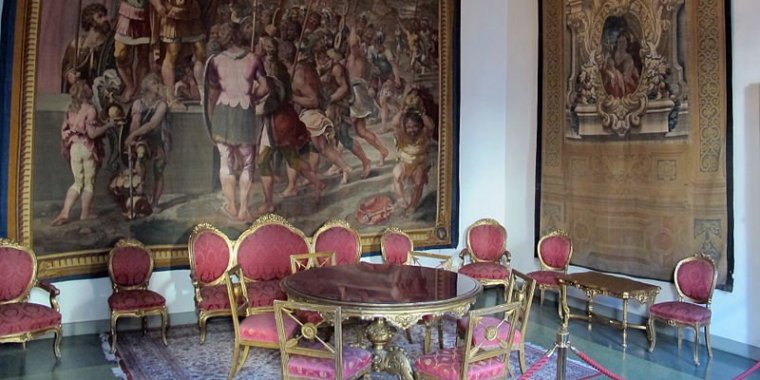| Travel / Tourist Attractions |
Palazzo Medici Riccardi, Florence, Italy

Palazzo Medici Riccardi, Florence, Italy. ![]()
The Palazzo Medici, also called the Palazzo Medici Riccardi after the later family that acquired and expanded it, is a Renaissance palace located in Florence, Italy. It is the seat of the Metropolitan City of Florence and a museum.
The palace was designed by Michelozzo di Bartolomeo for Cosimo de' Medici, head of the Medici banking family, and was built between 1444 and 1484. It was well known for its stone masonry, which includes architectural elements of rustication and ashlar.
The Palazzo Medici Riccardi was different for its time, and was the start of several architectural breakthroughs. It was believed to be the combination of Michelozzo's traditional and progressive elements that set the tone and style for future palazzi. The palazzo was the first building in the city to be built after the modern order including its own separate rooms and apartments.
The palazzo was also a start to not only Michelozzo's climb in status as an architect, but also as "the prototype of the Tuscan Renaissance palazzo," and became a repeated style in many of Michelozzo's later work. It was one of the first buildings to have a grand staircase that was not a secular design and for a building of this time and the status symbol of the client at the time, it was a simple and modest-looking building, however it was one of Michelozzo's most important commissions for the family and became a standard for other housing designed by him in years to come.
The palazzo itself is based on medieval design with other components added to it. The design was meant to be simpler but set in such a way that it still showed the wealth of the Medici family through use of materials, the interior and the simplicity.
The palazzo is divided into different floors. The ground floor contains two courtyards, chambers, anti-chambers, studies, lavatories, kitchens, wells, secret and public staircases and on each floor there are other rooms meant for family.
Regardless of its purposely plain exterior, the building well reflects the accumulated wealth of the Medici family.
Perhaps the most important section of the palace is the Magi Chapel, famously frescoed by Benozzo Gozzoli, who completed it around 1459. Gozzoli adorned the frescos with a wealth of anecdotal detail and portraits of members of the Medici family and their allies, along with Byzantine emperor John VIII Palaiologos and Holy Roman Emperor Sigismund of Luxemburg parading through Tuscany in the guise of the Three Wise Men. Regardless of its biblical allusions, many of the depictions allude to the Council of Florence (1438-1439), an event that brought prestige to both Florence and the Medici.
The chapel also used to host Filippo Lippi's Adoration in the Forest as its altarpiece. Lippi's original is now in Berlin, while a copy by a follower of Lippi has replaced the original. Other decorations of the palazzo included two lunettes by Filippo Lippi, depicting Seven Saints and the Annunciation, both now at the National Gallery, London.
Work by Donatello was also displayed in the Palazzo, namely the statues David, displayed in the courtyard, and Judith and Holofernes, displayed in the garden.

Biblioteca moreniana, Palazzo Medici Riccardi. ![]()
Info
Address: Via Camillo Cavour 1-3, 50129, Florence, Italy
Opening times: weekdays and holidays: 9. 00 – 19. 00, last admission at 18:30. Closed Wednesday
Admission
• full price € 7.00
• reduced price € 4.00 (children aged 6 to 12, military categories, groups of over 15 people)
• reductions for special categories
• free entrance: the disabled and those accompanying - entrance via Cavour no. 1
Entrance to the Chapel is limited to a maximum of 10 visitors every 7 minutes
Sources
• www.wikipedia.org
• www.palazzo-medici.it
YOU MAY ALSO LIKE







